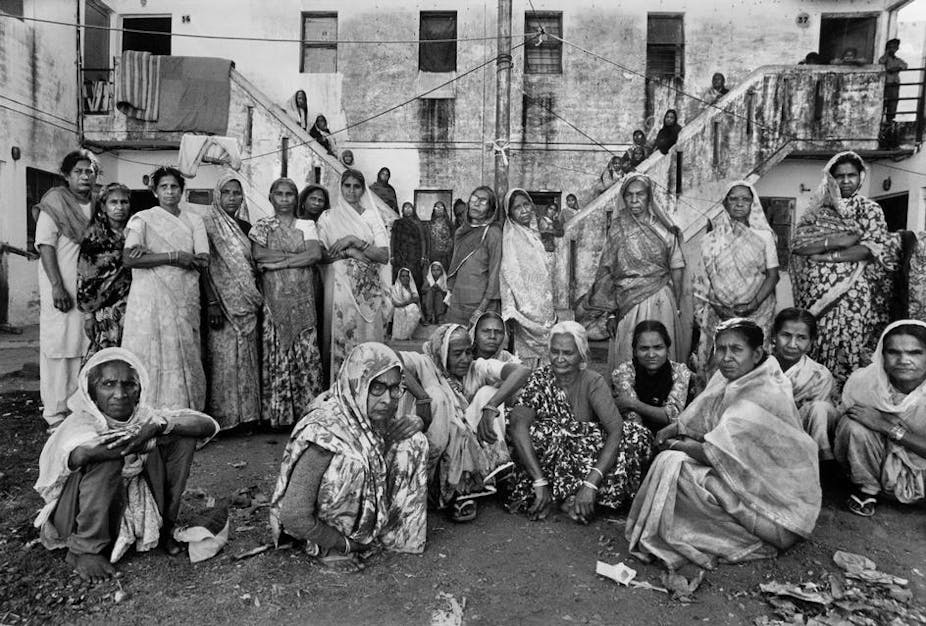Unfortunately, it’s the 15th anniversary. … We want you to help, because in the years to come, we do not want to write another ad that says: “Unfortunately, it’s the 30th anniversary”. (Bhopal Medical Appeal advertisement, 1999)
Unfortunately, it is indeed the 30th anniversary of the the Bhopal gas leak and it remains an ongoing disaster of epic proportions. The world’s worst industrial catastrophe was utterly preventable, stemming from serious negligence on the part of chemical manufacturers Union Carbide.
Despite widespread, creative and steadfast activism, the site of the chemical factory that released tons of lethal gases in December 1984 has not been cleaned up. Toxins continue to leak into the soil and groundwater supply up to 3km from the site of the abandoned factory, causing a third generation to be born with serious health problems and disabilities. This is often described as Bhopal’s “second disaster”.

Bhopal is back in the news as the anniversary protests and commemorations make for arresting headlines, but campaigners in the city have been working tirelessly to provide healthcare without state support and to lobby for adequate compensation.
In an era of rapid-fire news reports, ceaseless disasters, and short-term memories, the question is how to retain focus on the effects of disasters that last for decades rather than months or years.
Changing the narrative
It’s an issue we’re grappling with at Leeds as part of a series of events entitled Reframing Disaster. As researchers working on Bhopal and other global catastrophes, we feel this struggle exposes the dark heart of globalisation and corporate abuse. At the same time, we wanted to show how survivors living in the poorest conditions, experiencing ongoing trauma and neglect, have created networks of solidarity, care, and hope.
One of the things we’ve tried to do is put pressure on the idea of disaster as an “event” – in Bhopal’s case, something that happened on 2-3 December 1984 – and instead focus on the long-term nature of catastrophe.

This is very effectively dramatised through the arts: creative writing, photography, music and film provide us with lasting reflections on the physical and emotional fallout of large-scale disasters. They go far beyond numbers and statistics and offer a basis for understanding the preconditions for recovery and healing. Contrast this with the technocratic focus in disaster research on mitigation, preparedness and response.
Without attention to long-term recovery these sorts of accidents will continue to happen. To understand this dynamic, we need to look towards the profound forms of knowledge that the arts can bring to issues like trauma, injustice and exploitation in the wake of disasters.
Beyond the statistics
Take the world-renowned Indian photographer Raghu Rai, whose work provides vivid testimony of the disaster’s effects over time. As one of the first photographers on the spot in Bhopal in 1984, Rai documented the immediate aftermath of “that night”, and return visits over the past 30 years have built up a powerful visual archive of the local hardships. He is currently back in the city once again to document the anniversary commemorations.
We’ve been fortunate to be able to collaborate with the Bhopal Medical Appeal to bring an exhibition of Rai’s work to Leeds, along with a presentation of Francesca Moore’s Bhopal: Facing 30 photography,movie screenings and performance poetry by Avaes Mohammad, a former chemist who won an Amnesty International award for his poem Bhopal.
People are keen to understand why disasters like Bhopal last so long. After all, there are many Bhopals around the world – whether in the shape of ongoing catastrophes such as the radioactive Spanish town Palomares, the nuclear Pacific or Fukushima where the long-term effects are keeping people vulnerable, or in the shape of disasters waiting to happen.
Activism and the arts are at the forefront of exposing how power and privilege impact upon the poorest communities and continue to place them directly in harm’s way. We need to continue challenging the structural inequalities driving the rise and overwhelming scale of global disasters. The injustice still that surrounds Bhopal after 30 years shows exactly why.

